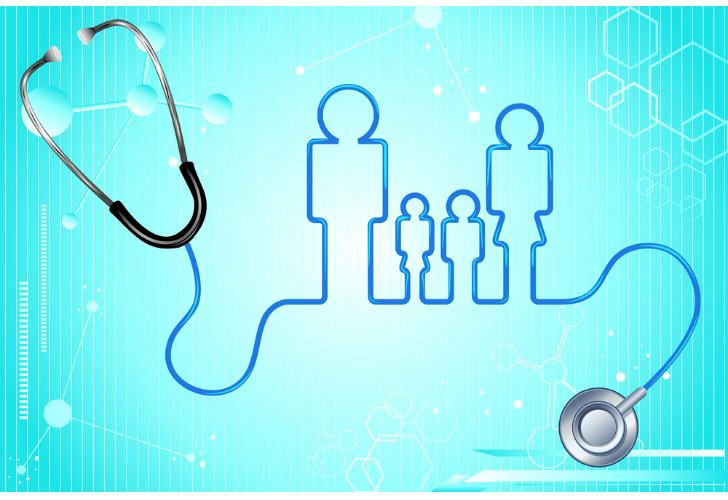Understanding U.S. Health Insurance: Service Coverage and Application Process
The U.S. health insurance system is an important part of protecting the health of citizens. Health insurance not only provides basic medical services, but also includes a range of preventive and therapeutic services. It is crucial for everyone to understand the service coverage and application process of health insurance.

Health Insurance Service Coverage
Health insurance usually covers the following services:
1. Hospitalization and surgical expenses
Health insurance will cover the medical expenses during hospitalization, including surgery, medications and nursing services. This allows patients to get timely medical help when needed.
2. Outpatient services
Outpatient services include routine physical examinations, diagnostic tests and treatments. With health insurance, patients can get professional medical services in outpatient clinics.
3. Preventive medical services
Preventive medical services include vaccinations, health checks and screenings. These services help detect health problems early and reduce the risk of disease.
4. Medications and treatments
Health insurance usually covers prescription drugs and treatment costs, such as chemotherapy, physical therapy, etc.
5. Mental health services
Many health insurance plans also include mental health services, such as counseling and therapy.
6. Laboratory Services
Includes laboratory services such as blood tests and imaging tests.
7. Rehabilitation and rehabilitation equipment services
These services help people recover or gain skills after injuries, disabilities, or chronic diseases.
8. Children's Services
Includes oral and vision care for children, but adult dental and vision care are not required health insurance benefits.
In addition to these basic services, some health insurance plans may also provide additional benefits such as dental insurance, vision care, etc.

Application process for health insurance
Applying for health insurance usually involves the following steps:
1. Prepare necessary information
Before starting the application, you need to prepare the following information:
Personal information: name, date of birth, social security number, etc.
Family information: name, date of birth, and social security number of family members.
Income information: Proof of income, such as pay stubs or tax slips.
Existing insurance information: If you already have health insurance, you need to provide details of the existing insurance.
2. Choose an application method
There are several ways to apply for health insurance:
Online application: This is the quickest way, apply through the official website or online platform.
Telephone application: Apply by phone with a specialist.
In-person application: Apply by in-person at a local office or agency.
Mail application: Fill out a paper application form and submit it by mail.
3. Fill out the application form
The application form is usually divided into several sections:
1. Personal information: Fill in your basic information.
2. Family information: Fill in the information of family members.
3. Income information: Provide proof of income.
4. Existing insurance information: Fill in the details of existing insurance, if applicable.
4. Submit the application
Once you have completed the application form, submit it to the relevant agency. Online applications usually show eligibility results immediately, while paper applications may take several weeks.
5. Determine Eligibility
After submitting your application, you will receive a Notice of Eligibility stating whether you qualify for health insurance and which plans you can choose.
6. Choose an Insurance Plan
Based on the Notice of Eligibility, you can choose a health insurance plan that is right for you. You should consider factors such as premiums, deductibles, and coverage when making your choice.
7. Pay the Initial Premium
Once you have chosen an insurance plan, you need to pay the initial premium to activate your insurance coverage.
Importance of Health Insurance
Health insurance not only provides financial security, but also helps promote a healthy lifestyle. With health insurance, people can get necessary medical services without worrying about high medical expenses, thereby improving their quality of life.
Challenges
Although health insurance provides a wide range of services, there are still some challenges. For example, some people may find it difficult to afford the premiums or feel confused when choosing an insurance plan. In addition, differences in insurance coverage and deductibles may also result in different levels of medical services for different groups of people.
Future Development
With the advancement of medical technology and changes in population structure, the health insurance system will continue to evolve. In the future, health insurance may pay more attention to preventive medicine and personalized services, and improve the efficiency and quality of medical services through data analysis and technological innovation.

Public Health Insurance Program
In addition to private health insurance, there are a variety of public health insurance programs in the United States, including:
1. Medicaid
Medicaid is a federal and state-funded program that mainly provides medical insurance for low-income families, children, pregnant women and people with disabilities.
2. Medicare
Medicare is a federal social insurance program that mainly provides medical insurance for people over 65 and some people with disabilities.
3. CHIP (Children's Health Insurance Program)
CHIP is a federal and state-funded program that mainly provides medical insurance for children who cannot afford private insurance but are not eligible for Medicaid.
These public programs play an important role in providing medical insurance for low-income people.
Apply for public health insurance plans
Applying for public health insurance plans, such as Medicaid and CHIP, usually requires the following steps:
1. Check eligibility
Determine whether you are eligible for the application, usually based on income, family size and other factors.
2. Prepare information
Prepare necessary information, such as name, date of birth, social security number, proof of income, etc.
3. Submit application
Applications can be submitted through online platforms, by phone or by mail.
4. Wait for response
After submitting the application, the relevant agency will notify you whether you are eligible for these plans.
Summary
Health insurance is an indispensable part of modern society. By understanding the service coverage and application process of health insurance, people can better choose the insurance plan that suits them and obtain timely and effective medical services. As the health insurance system continues to develop, we can expect it to provide better medical protection for more people in the future.
